Type
Thesis
Role
Author
Project summary
This project depicted an approach of describing human's cognition model towards energy, and applied that model to formulate a future partnership between human and battery-less devices.
Project link
↗GithubCurrent Energy Partnership
Today's mobile devices powered by batteries have kept feeding users endless entertainment and convenience , where as always accompanied by some unfavorable experiences that is 'Always have to recharge'. The puzzle of battery life has been an inevitable limitation that could probably degrade user experience, even though smartphones, smart homes, and smart wearables are growing ever more advanced. Current mobile device users have equipped the knowledge of handling the limited battery life and formulated a cognition towards energy in battery-based devices. In other words, the Current Energy partnership, meaning the interactive and cognitive relations between users and energy in battery-based devices, is built on the battery capacity limitation.
Energy Harvesting Technology
As an enabler of battery-less devices, energy harvesting technology has exceptional potential in replacing the battery as the power source for future mobile devices .On the other hand, however, accompanied by enormous potential, energy harvesting will also bring tremendous concerns. The current energy partnership, which is established based on the limitation of battery, will no longer effective since battery life is no longer an issue.
Goal and Methodology
The central aim of this research has been to explore the current and future Energy Partnership between users and energy.The Research-through-Design methodology has been employed, embracing online surveys, user interviews, prototypes design, and user tests to launch a collaborative discussion with interviewees about the possibilities of the future Energy Partnership.
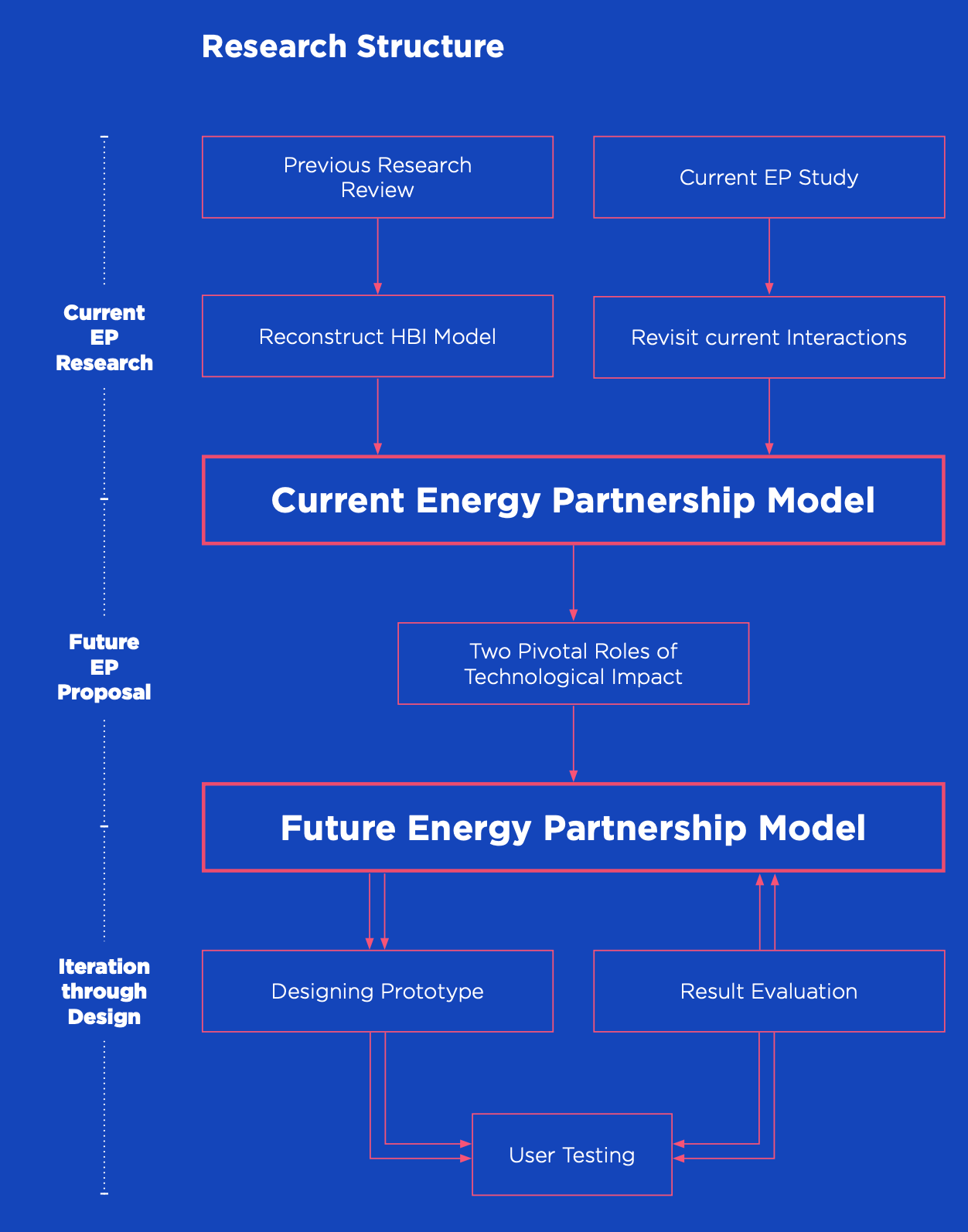
A diagram showing the research structure of the whole thesis.
Conclusion
From a set of user studies and a systematic integration of previous
research, the current EP Model is proposed to demonstrating the interactive and cognition process between users and the energy in battery-based mobile devices.
The research found that the current energy partnership can be conceptualized as a balance between user and appropriate usage time. Building on the current EP Model and insights distilled from expert interviews, a hypothetical EP Model has been developed, articulating the transformation of Energy Partnership brought by energy harvesting technology. The hypothesis was then iterated twice through designing and testing the prototype simulating the energy behavior of intermittently powered devices.
Literature Review
To grasp the current research outcomes in the realm of human-energy partnership, three perspectives of energy study has been revisited and summarized: energy as manifestation, energy as ideology and energy as reciprocity.
.png)
A visualisation for the summary of literature review and the next step.
Quantitative and Qualitative Research
Inspired by the methodology of previous BI researchers, an online survey and follow-up user interviews were conducted with the purpose of dive into all aspects of the HBI process.
After synthesizing, the data collected quantitative and qualitative research, these insights are then conceptualized into eight factors with the basis of Rahmati's HBI Model by means of card sorting.

Proposing Current EP Model
In previous HBI Model, the human side was not fully developed. At the same time, Don Norman's 7 Step Action Cycle successfully conceptualized the interaction at the cognition dimension.Therefore, this project will try to integrate the above two models to propose a new EP Model demonstrating both the HEI and Cognition process.
%202.png)
Research through Design (RtD)
the Future EP Model is iterated through the design and test of prototypes simulating the energy behavior of intermittently powered devices. After setting up the test, a reusable prototype framework was designed and applied to the following iteration process. Furthermore, the future model is iterated twice according to insights gained from testing.
.png)
Hypothetical EP Model
Prototype Design and Testing
An prototype using Arduino and Protopie was built to simulate the power interruption. Two tests were then setup to iterate on the hypothetical EP model. Seven participants were asked to use the provided prototype to listen to music for one hour or one day. Observations and follow-up interviews were mainly use to get insights.
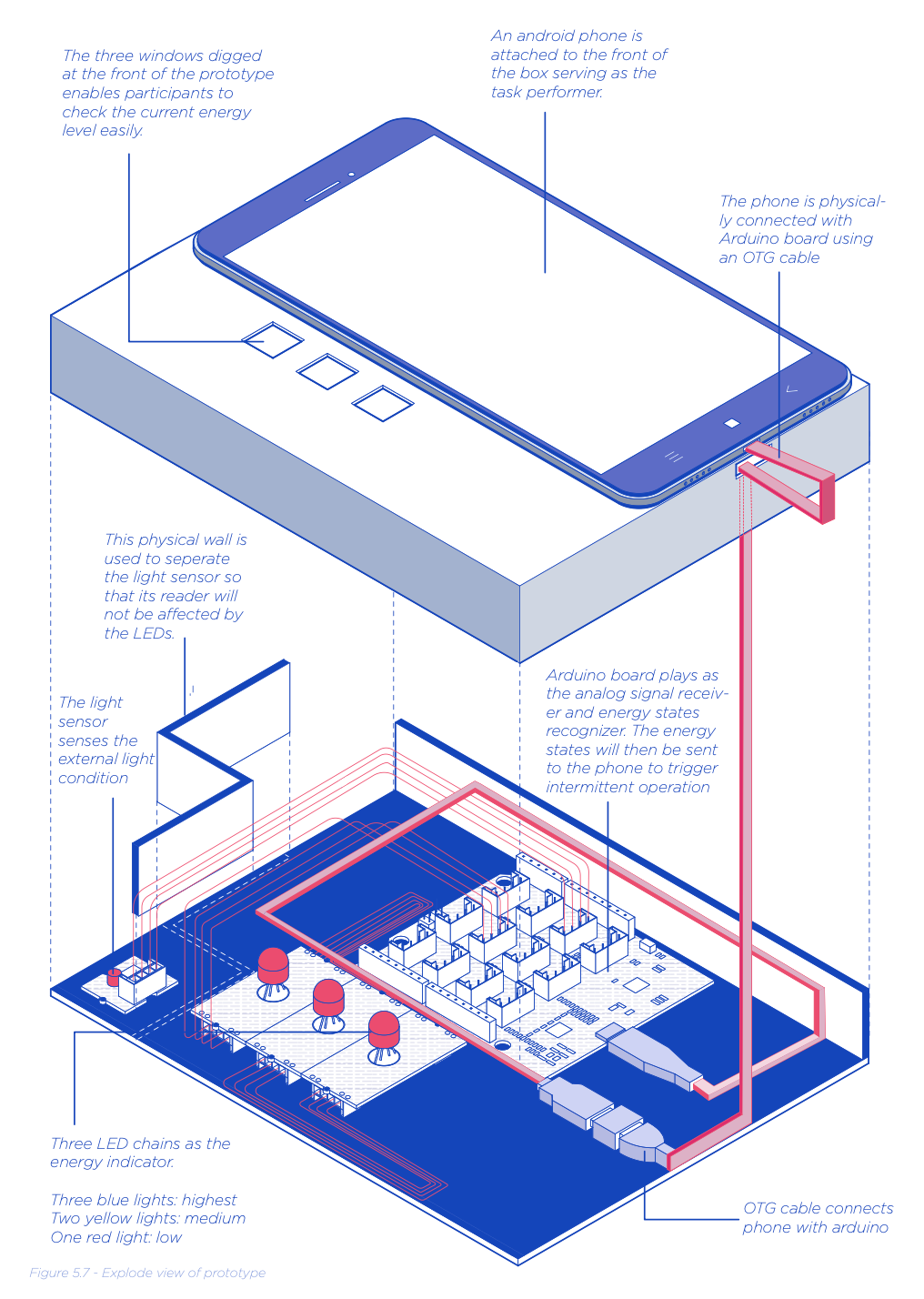
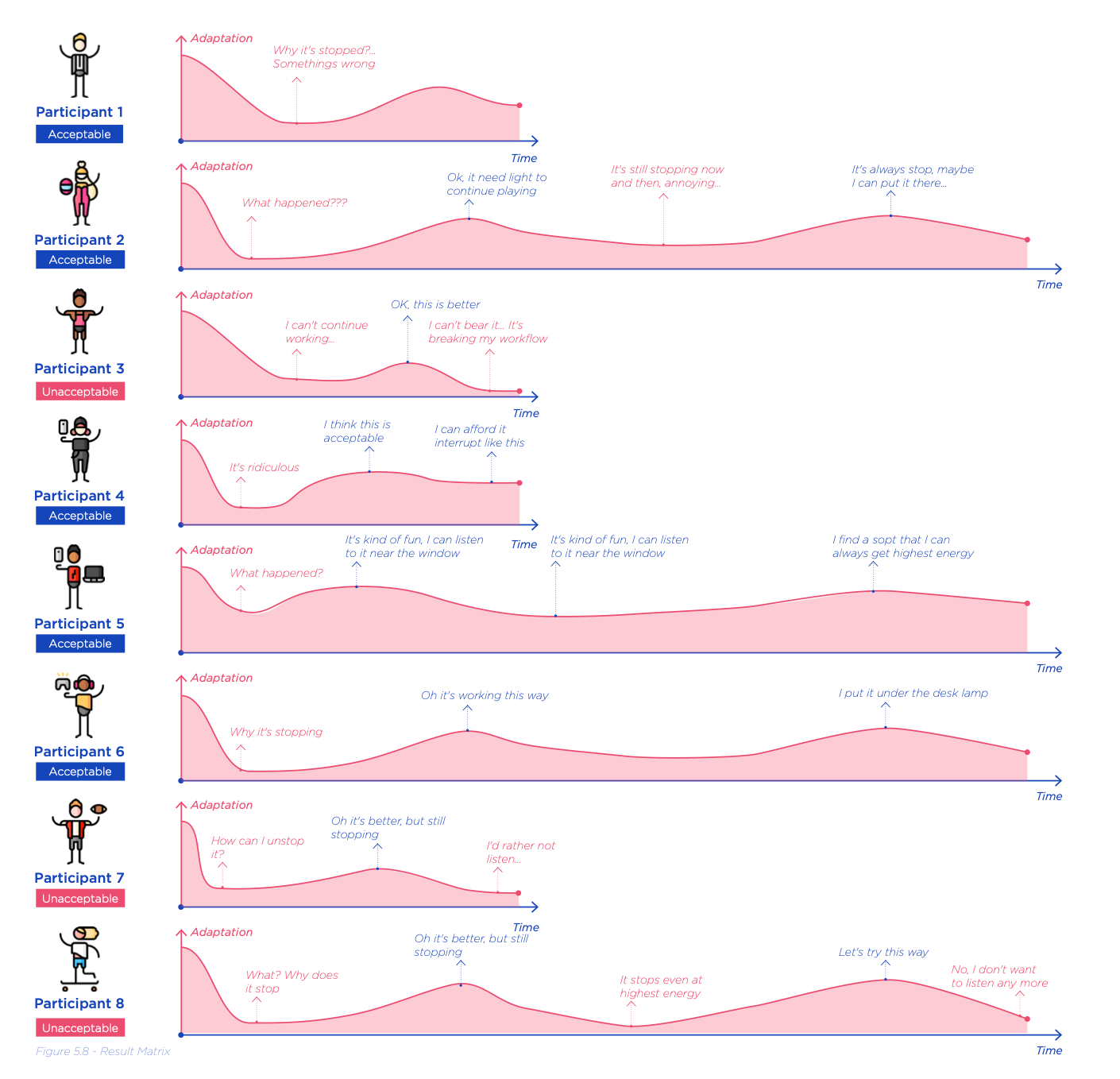
1st round test result matrix
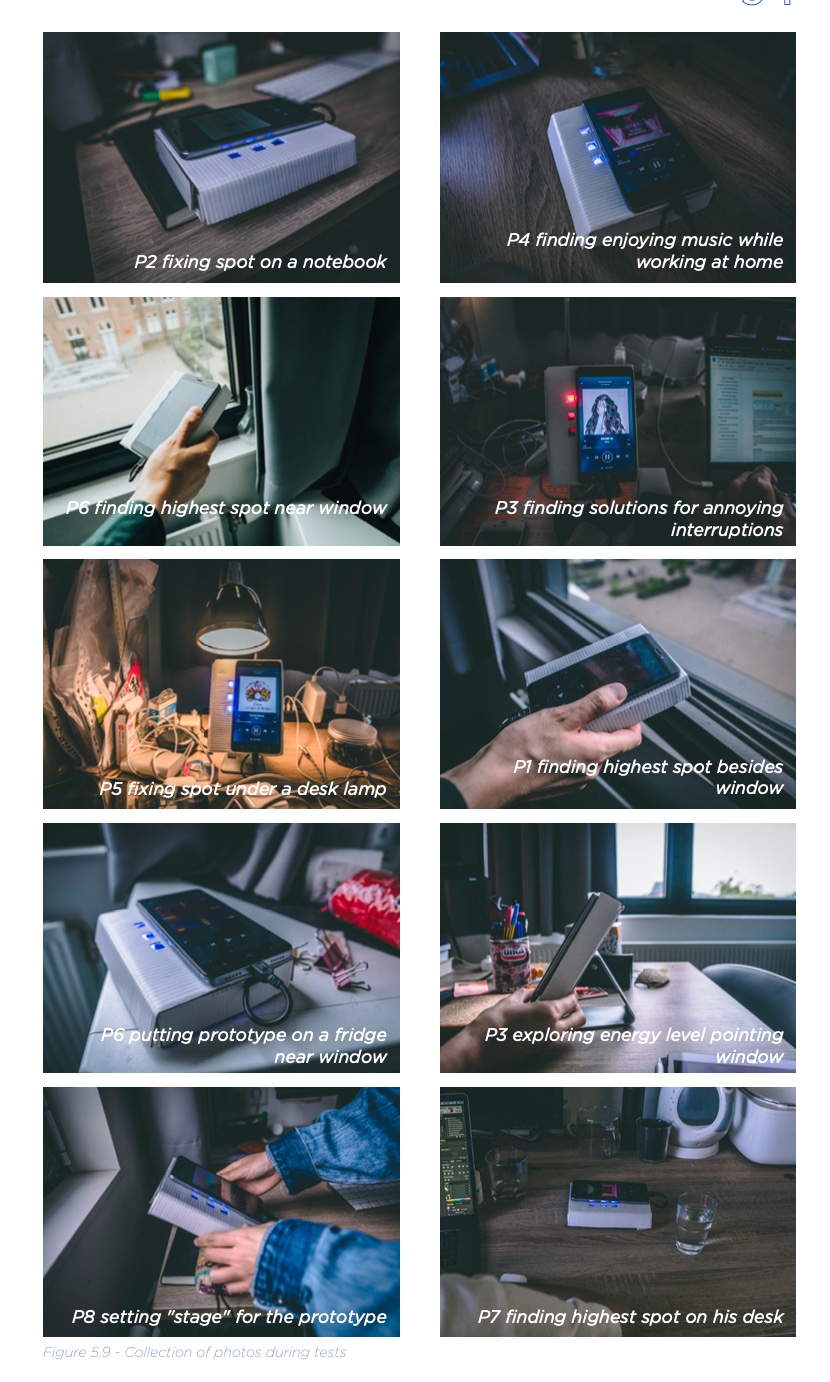
1st round testing photos
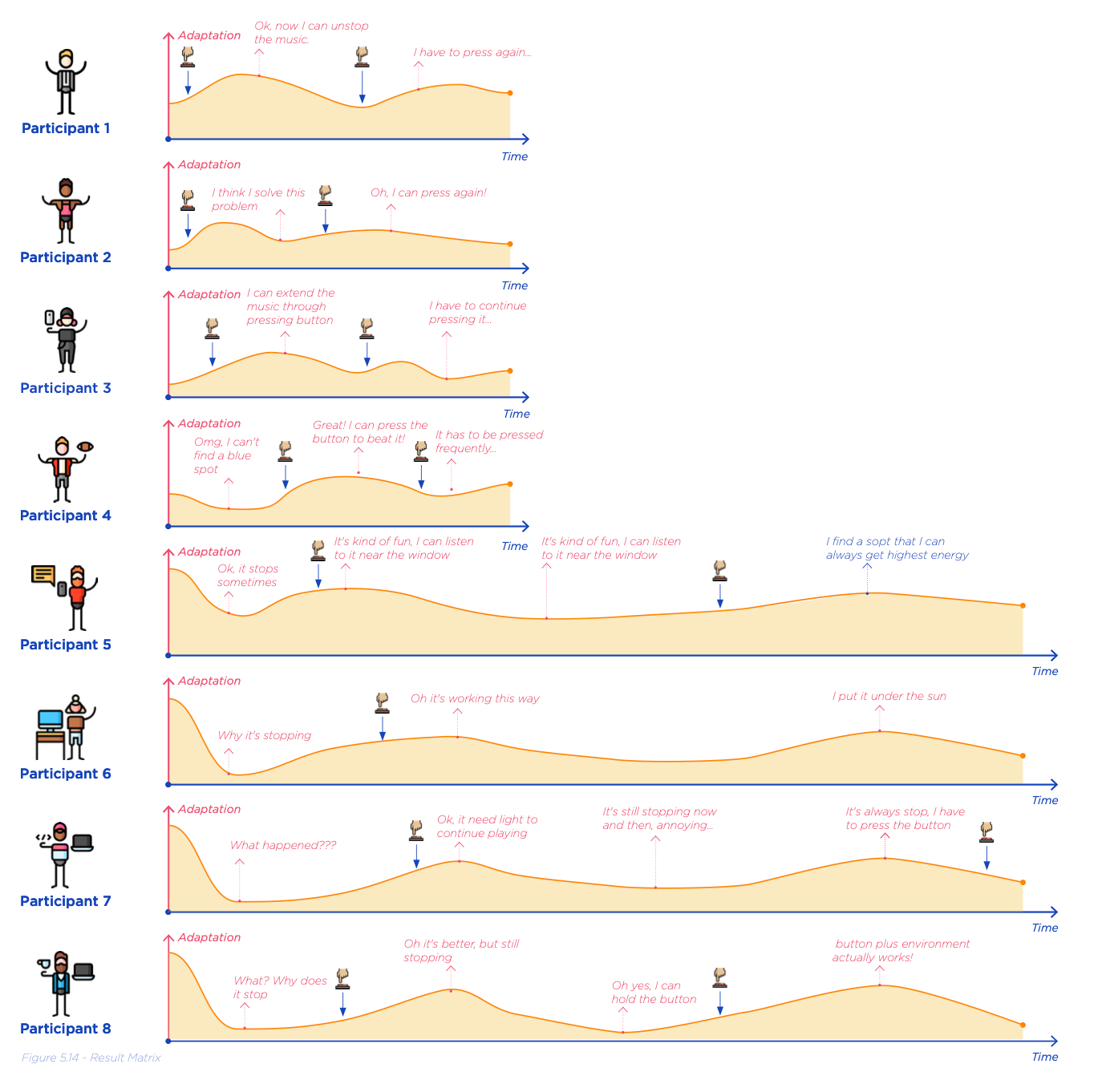
2nd round test result matrix
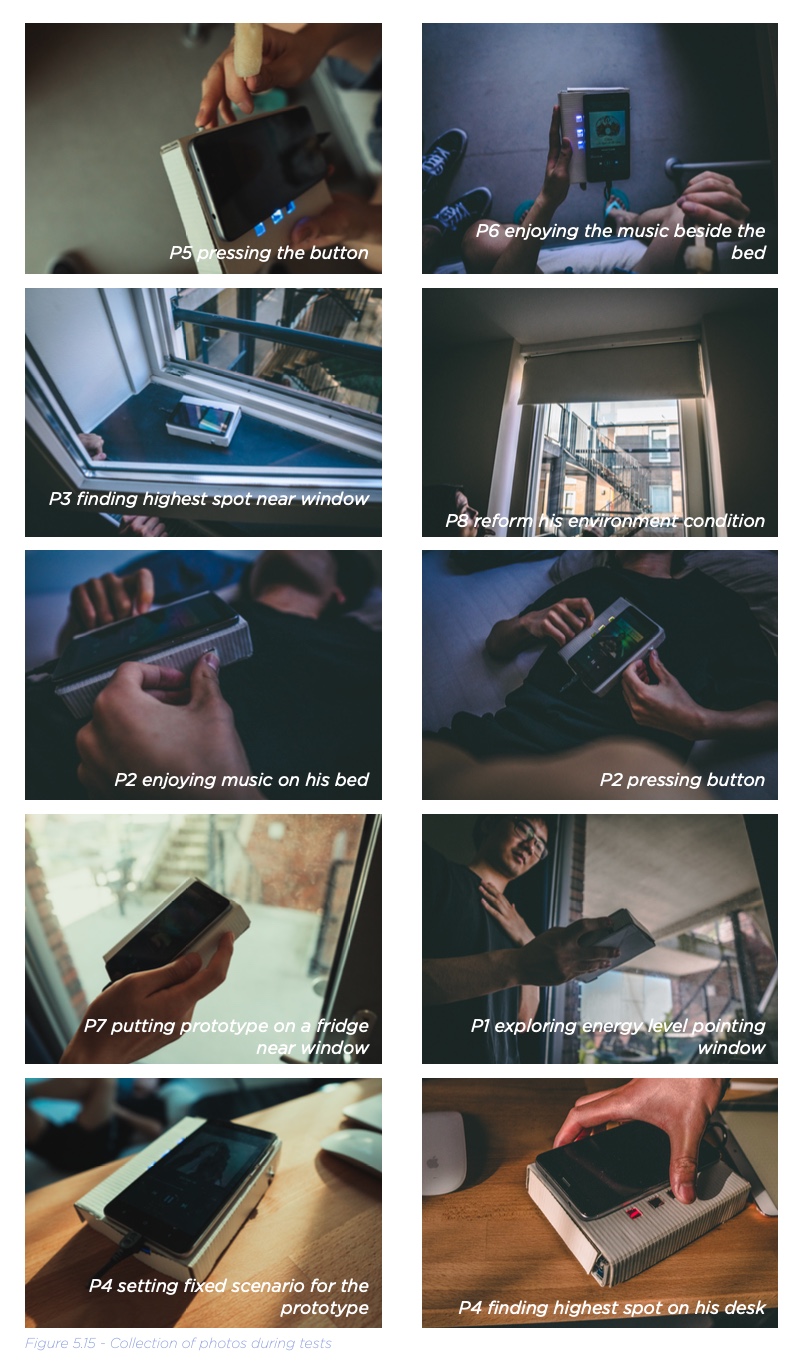
2nd round testing photos
Future Energy Partnership Model
The image below demonstrates the future relationship between energy in intermittently powered devices and users. It consists of two processes: the HEI process, which describes how users will interact with the manifestation of energy externally, and the Cognition process, which describes how users will internally process the perceived energy-related information in their minds before taking actions. Two processes are connected with each other through Action.
Transformation: interactions and cognition
Compared with the current mobile devices, energy harvesting technology, casting off the battery-based energy system, will empower future mobile devices with significant accessibility and diverse form without charging and limiting battery capacity.But its side-effect, intermittent operation, will also be annoying and unpredictable. Intending to uncovering how energy harvesting will affect the current EP, this research revisits battery-based EP, builds a model conceptualizing every step of interaction and cognition process, and finally brings out the future EP model through design activities. The transformation from battery to energy harvesting, is not only a technology evolution, but also a transformation of interactions and cognitions.
Transformation of Interactions - Limited battery capacity leads to prescribed usage time and frequent charging. Current mobile devices enable users to perceive energy level to know how much time remains that the device can hold; charge to keep it alive; trading off usability with the extension of battery life. On the other hand, users learn to deal with limited battery capacity through years of use to perceive battery level through indicators and notifications, adjust usage intensity, and build charging scenarios. Energy harvesting frees users from the burden of dealing with battery life but brings new troubles to them-the intermittent, fast changing, context-sensitive energy supply. Therefore, users are forced to reshape the relation between environment and energy. New interactions between users and energy emerge, including Spatial Change, meaning reshape the relationship between the user and energy; manual energy input describing the actions of manually power the device shortly; lower requirement articulating users lower their standards to avoid the mental load. Energy harvesting technology transforms the typical, linear, predictable interactions into novel, dynamic, context-sensitive human-environment interactions.
Transformation of Cognitions - One of the main contributions of this research is that it adds another dimension of understanding the EP-cognition process. Every interaction is the externalization of the cognition, and its feedback feeds for the next cycle of the cognition process.The energy-related interaction scan be various, but they are all triggered by a universal goal-to gain the Appropriate Time. After all, all of the current interactions are the manifestation of users dealing with limited battery life that causes limited usage time.This uncertainty forces users to interact with battery interfaces to make sure there is enough usage time for their current and planned tasks. Energy harvesting offers users with unlimited usage time, but bring sudden interruptions to them at the same time. Users then evolve new interactions to handle the sudden energy shortage with another unified purpose- to gain the appropriate experience. The technology revolution will make users adapt to the unlimited time, yet flaw use experience of using devices. Users will reform their actions and evaluation factors, reshape their knowledge between environment and energy, and finally, re-conceptualize their goal as appropriate experience. The conceptual transformation from current to future EP, is the transformation from time to experience.
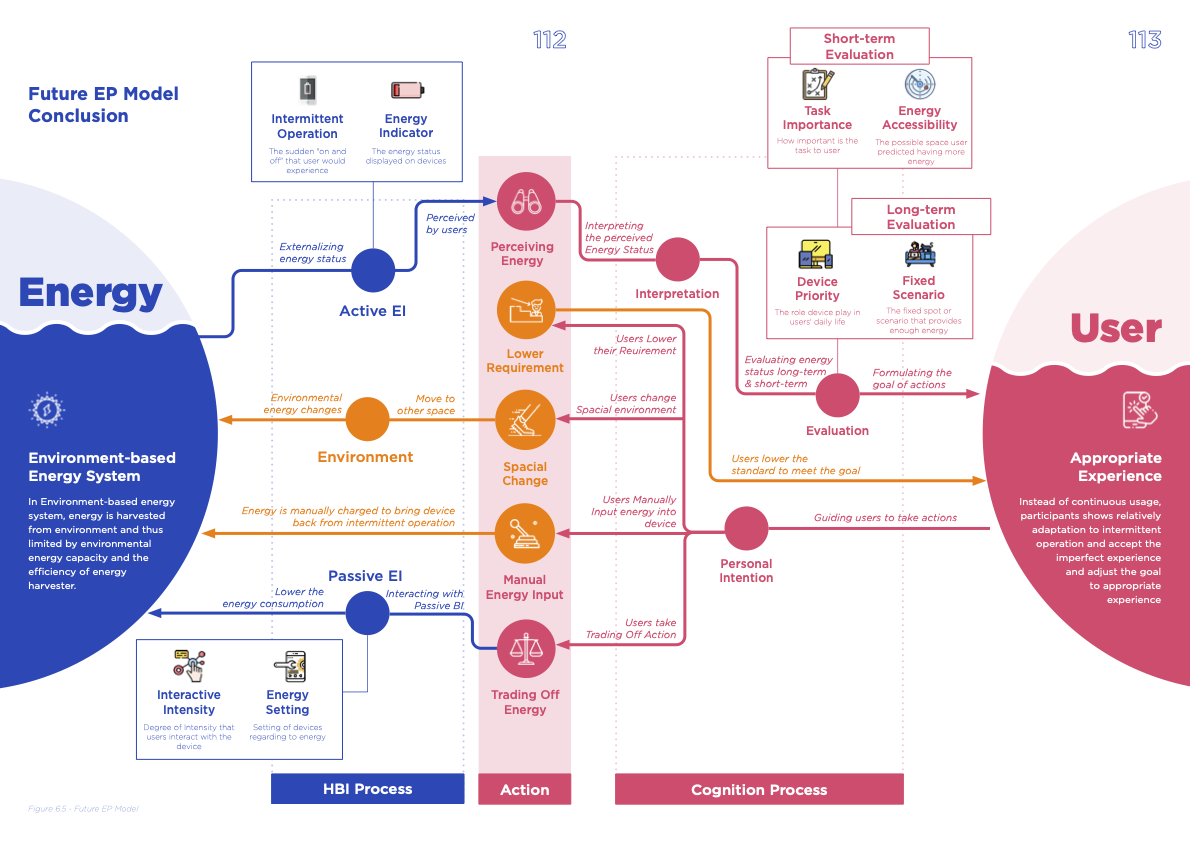
Conclusion: Future EP Model
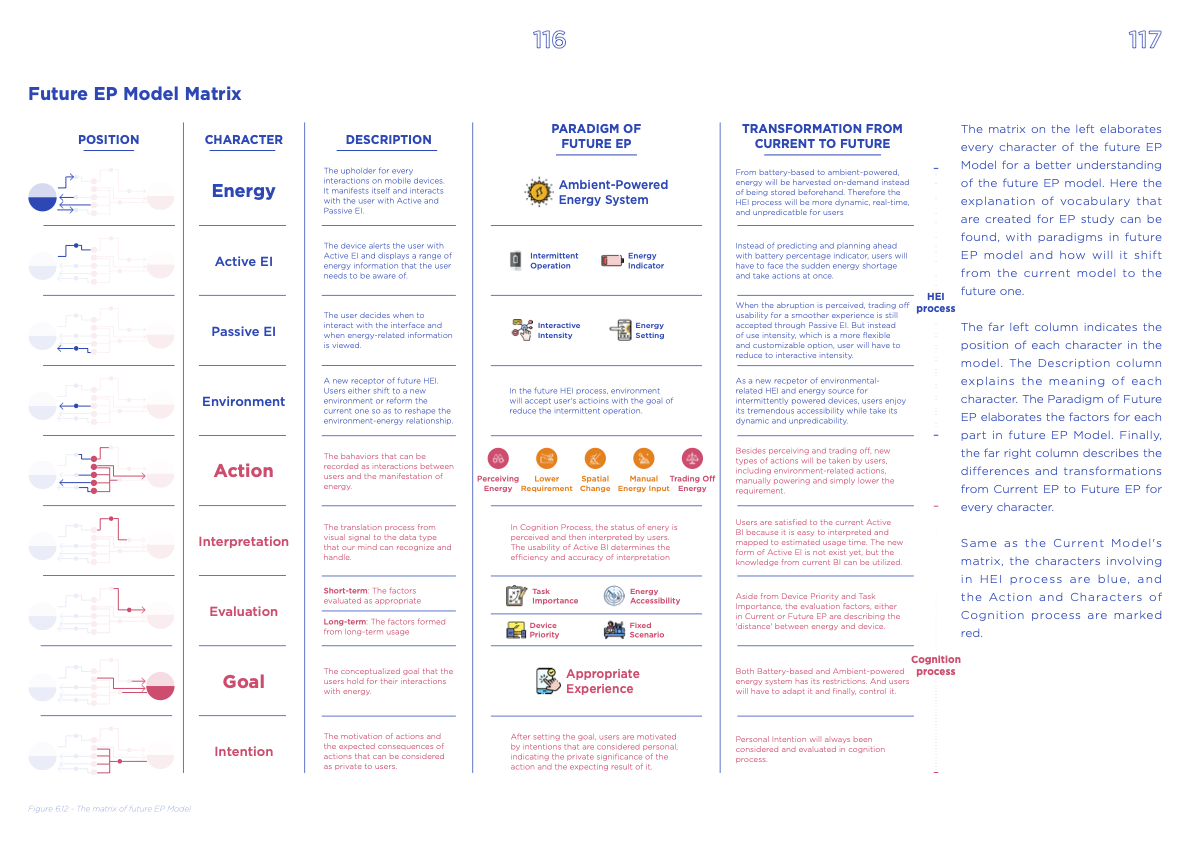
Conclusion: Future EP Model Matrix
baihongbao@outlook.com